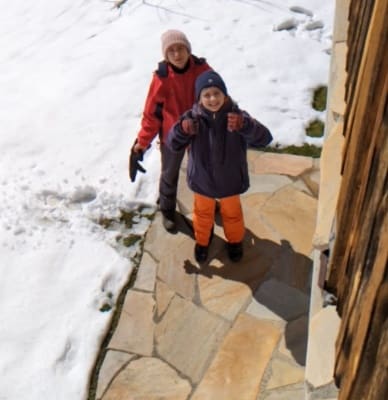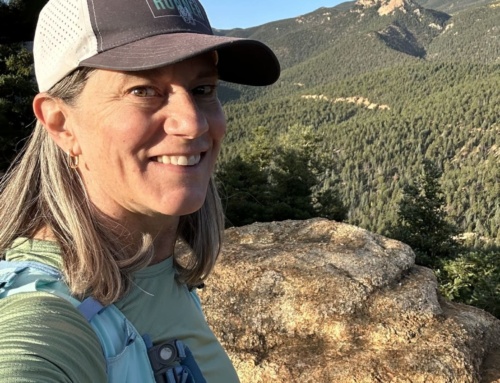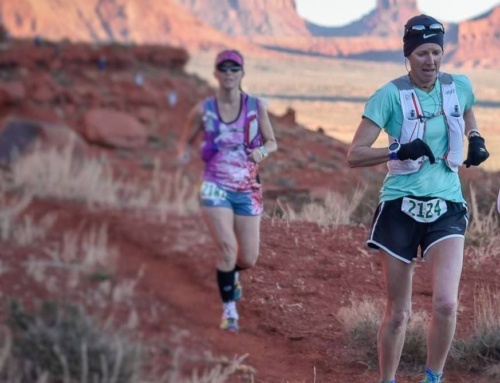Like so many mother runners, I don’t know how to lessen the horror happening in Ukraine. I wish I could bring the safety of my house to all of the Ukrainian people who go to sleep not knowing who will still be alive when they wake up.
That’s impossible, of course. It’s hard to know how to help when the situation feels both so abstract and immediate. Mapping my experience of running as a connector onto a war seems shallow — but running is the one way that so many of us are in community around the world. Running can show us what Ukraine is and how to help in the ways we can from where we are.
When Emma Griffis and her husband joined the Peace Corps, they hoped to wind up somewhere exotic and warm, like friends who’d been assigned to the Pacific Islands. Instead, they were sent to Ukraine in 2009. They arrived on April Fools’ Day to a “chilly, brown, Soviet-bloc-style sanitarium” for their initial orientation. “It just seemed cold, both in weather but also in architecture, countenance, and climate,” she says.
That first assumption was quickly replaced with a growing love for the place and its people. Once spring really started, the neighborhoods were full of flowers. “Ukrainians are the most generous and lively people I have met. They celebrate anything and anyone and do it with style, along with lots of great food and drink,” Griffis says. She cried when she left in 2011; in 2018, she and her husband brought their first two kids back for a reunion.

Kim and Kristen connect over Zoom.
Most of her time in the country was spent in a small town, where her running habit made her stand out. She became known as the “strange American who would run for fun.” Spring runs were her favorites. The Ukrainians take spring clearing seriously and would put fresh coats of paint on fences and homes. Front yards would bloom with gardens, rather than lawns. Poppies were popular.
This spring will be different. The town Griffis lived in isn’t under attack at the moment — but former students and friends are. Some have evacuated to Poland and Italy; others have stayed to support the troops on the frontlines.
The horror we all feel when we see the destruction has a different echo for Griffis. “While I don’t know the owners of those homes or the students who studied in those schools, I know those homes. I know what those apartments look like and the feeling of comfort and welcome when one steps into them. I know what it’s like to teach and be with students in those classrooms. Recently, as more gruesome images have come out, there is a distinct feeling that those people lying in the streets could be our friends, our ‘Ukrainian family,’” she says. “It would feel like a betrayal to look away and not keep up with what’s going on.”
Griffis has some concrete ways any mother runner can help the Ukrainians, which will be at the bottom of this post. But one mother runner couldn’t resist reaching out to another mother runner when she was in the perfect place to offer concrete aid.
Kim Frick, a BAMR in Zurich, Switzerland, was procrasti-scrolling though Facebook before a run. She saw a post from Kristen Genet, who she knew virtually from a 2018 AMR training group. Kristen’s brother Keith was flying to Poland to help their Ukrainian friend Natasha and her 11-year old son Vova travel from there to Kim’s country.
Kim wasn’t sure how to help — mom and son settled in four hours away from her — but she sent Keith train information and a list of tricks a local would know about Swiss travel. Last weekend, he sent her a message asking for any winter gear she could pass along. Since Kim has two growing boys in a ski racing club, she had plenty on hand-me-downs to spare. Keith traveled to Zurich to pick them up.
“So you’ve never actually met my sister,” Keith asked when they met.
Kim just laughed. “I feel like I know so many of the BAMRs I’ve trained with over the years. I feel like I could meet any of them in person and hit it off — and I have!” Kim said.

Natasha and Vova in their “new” winter gear.
After a Schnitzelbröt in front of the Opera House, the pair went to Kim’s apartment to gather jackets, shoes, and boots, which Keith took back for Natasha and Vova. Since then, Kim has recruited her French-speaking husband to find support groups for Ukrainians near Geneva. She hopes she can continue to find ways to help.
Even this seemingly small moment has meaning, Kristen says. “I was amazed and so grateful for the kindness. It was a reminder that the world is filled with amazing people even when what we see in the news is pure ugliness.”
Kim was happy to apply what she’s learned from running to other parts of her life.
“Sarah and Dimity have taught me so many great running lessons, ‘Don’t think just go’ and ‘Run the mile you’re in’ that you can apply outside the running world: ‘Don’t think just help’ and ‘Help where you are.’ I’m grateful that Keith didn’t think I was some internet weirdo and that the label ‘running friend” carried some weight,’ Kim says.

The Ukrainian flag flies in front of a ferris wheel in Zurich.
Most of us don’t live in a place where we can offer direct support to refugees. But if you want to help where you are. Emma offers these suggestions:
- Ukrainians really do appreciate the visible show of support by wearing their national colors of blue and yellow, flying flags, wearing pins, and attending rallies and fundraisers.
- Anyone can call or write representatives of their government to ask for further support for Ukraine. Here’s a template geared to US congresspeople, provided by an organization called Razom for Ukraine.
- Many of us may be able to help with monetary donations:
- Come Back Alive NGO directly supports the Ukrainian military. Note: “Our organization does not use funds for purchasing arms.”
- Razom for Ukraine partners with local orgs to provide critical humanitarian war relief and recovery depending on the most urgent needs as they evolve.
- The National Bank of Ukraine is taking donations for two funds: one directly for the armed forces, and another for humanitarian aid.
- Support Ukraine Now has a more comprehensive list with a variety of ways to help.






The world is at once a massive planet and a connected community when you’re a runner. What a testimony to the power & kindness of the running community.
Thanks for the list of helping resources as well.
This is so encouraging! It gives names, faces and context to this awful crisis. Thank you for showing us these women’s hearts and putting their words into very practical action!
I adore this story and know mother runners will always be there to lend a hand.
Kim is an amazing mother, runner and friend. I met her through AMR and Strava and have since met her three times in person and we’ve run in two races together along with our sweet friend Debra Helfand. Never underestimate the power and kindness of women runners. Kim is the epitome of a person filled with love and generosity.